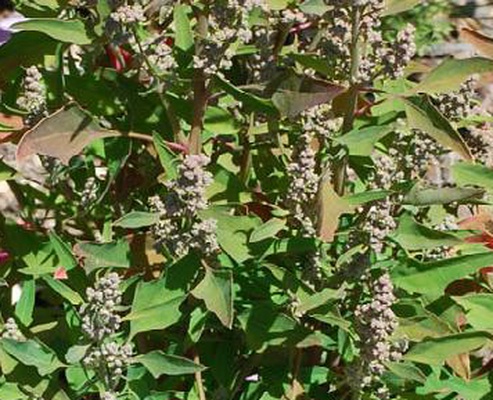Chenopodium nuttalliae is a species of edible plant native to Mexico. It is known by the common names huauzontle and Aztec broccoli. Other variations of the name include huauhzontle, huazontle, huanzontle, and guausoncle. It is related to other commonly-consumed plants such as quinoa, amaranth, and epazote, as well as the common American weeds goosefoot and lambsquarters. The plant grows upright branches with red tinted green leafy stems. Huauzontle stems superficially resemble baby broccoli, although the stems are much thinner, and support fewer of the leaves.
Like amaranth, huauzontle is very resistant to cold and dry climates, and grows even in poor soil. In addition, it has a high nutritional level, which makes it an excellent grain alternative in regions with difficulties sowing other types of cereals.
